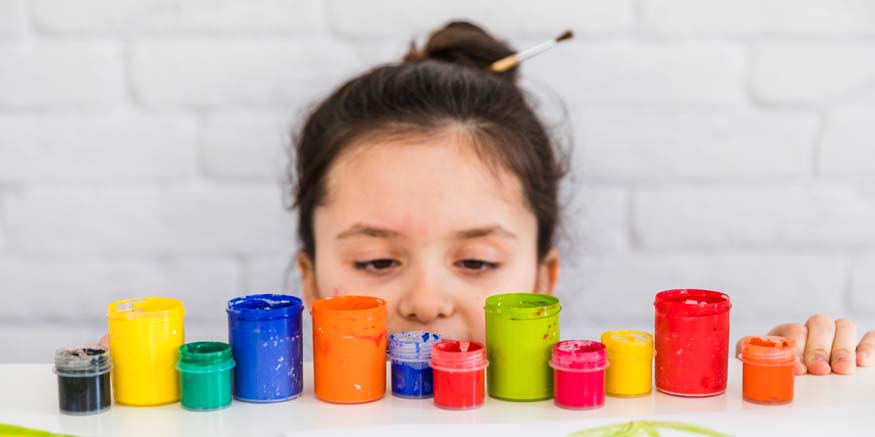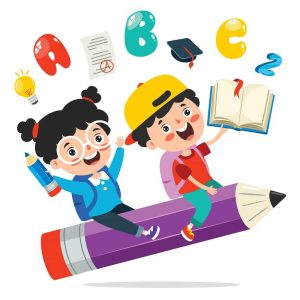A Parent’s Guide to Discovering Unique Learning Styles of Their Children

The present-day changing educational environment requires parents to appreciate their children’s learning styles. Recognising and embracing their unique needs can give them enhanced educational potential. This comprehensive manual helps parents identify their child’s different types of learning styles. Let’s delve into useful parenting tips and techniques to foster supportive learning.
The Importance of Understanding Your Child’s Learning Styles
Each child has an individual learning style. This influences how they pick up, interpret, or remember information. This could assist parents in customising their methods of educating children. Following are the reasons why understanding learning style is so important:
- Enhanced Learning Experience
- Improved Self-esteem and Confidence
- Efficient Use of Time and Resources
Children are more interested in education if it’s according to their learning preferences. This improves their comprehension abilities. Memory becomes better, leading to general academic achievements.
Children become more confident in their skills by realising their strengths. This affects how the child perceives themselves and their ability to take on challenges.
Aligned learning preferences can help them grapple with ideas in less time. This allows educational resources to be utilised effectively.
Understanding Learning Styles
- Visual Learners
- Good at visual recall.
- Love for visual features like charts, diagrams, etc.
- Ability to create a mental picture of ideas.
- Auditory Learners
- Excellent speaking and listening skills.
- Strong auditory memory and recall.
- Enjoys podcasts, audio books, music, etc.
- Kinesthetic Learners
- Energetic and physically active.
- They touch and move things while they learn.
- Retention is enhanced by physical involvement in addition to comprehension.
Visual cues and instruments help visual learners to process data better. They would rather look at the information presented to them. Essential aspects of the visual learners are as follows:
Auditory learners understand and remember knowledge mainly through sound and oral communication. They excel in discussions, lectures, or public speaking because they have a way with words. The following are important traits of an auditory learner:
The best set-up for kinesthetic learners is experiential learning. They learn through movement, actions, and engaging their environment. Here are some of the outstanding traits associated with kinesthetic learners:
Tailoring Learning Strategies
Parents have a significant role to play in children’s education. Especially in identifying and promoting their child’s unique learning styles.
- Observe and Communicate
- Find out how they engage themselves with various study materials or exercises.
- Encourage your child to tell you what he or she thinks, feels, and prefers when it comes to schooling.
- Ask open-ended questions aimed at discovering more about how they like to be taught.
- Develop a Supportive Environment
- Even if such steps are modest, they should be celebrated.
- Give them advice that will make them improve without discouraging them.
- Create a quiet space for yourself where you can study free from interference.
- Collaboration with Educators
- Be part of parent-teacher conferences to discuss the progress of your child.
- Educate instructors on your child’s preferred modes of learning.
- Seek the teacher’s advice and tactics that suit the individual needs of your child.
- Use Learning Materials in Variety
- Build a personal library with books of different genres and subjects.
- Buy puzzles, games for teaching, art supplies, and interactive educational resources.
- Make use of educational software and technology to enhance academic performance.
- Outdoor and Physical Activities
- Allocate time for regular outdoor playing, natural outings, and physical exercise.
- Enrol your kid in sports or any other physical activity they would like to take part in.
- Plan active family holidays, such as hiking or biking.
- Structured and Unstructured Learning
- Draft a flexible schedule that incorporates time for focused study and free time.
- Encourage them to engage in imaginative play, and provide games and toys with open-ended features.
- Let your child pursue his or her interests and hobbies on their own terms.
Children’s behaviours during different learning activities show their styles of learning. Open and frank talks with them can help you understand their learning style. It also helps to understand their abilities, challenges, and desires. Consider these strategies:
Parents should create a good educational environment at home. This helps them ensure better support for their child’s learning style. To build their personality, consider some of the following points:
For parents to help their children’s learning styles, they must partner with teachers. Parents must stay in constant touch with teachers. This would help them share their child’s learning preferences with their teachers. This, in turn, will let you collaborate and develop a sound learning plan. Highlighted below are some methods that must be considered:
Creating a Supportive Learning Environment
An entire range of components exists in an environment. These must be balanced for learning, hence fostering development for the student. Consider these factors when setting up such an all-rounded teaching environment:
A wide variety of learning materials helps to develop your child’s inquisitiveness. This enables them to explore many interests. Here are some suggestions:
The development of your child is centred on outdoor play and physical activities. Outdoor activities and exercises improve mental alertness, creativity, and social skills. Consider the following points:
Your kid’s growth requires both organised learning and unstructured leisure. This leads to creative thinking, problem-solving, and the ability to interact with others. These skills are developed through unstructured play. Concentration and self-control can be gained from structured learning. Here are a few tips:
Understanding the unique learning styles of our children is vital for us as parents. It becomes necessary to make them feel supported and develop an educational background. So that it recognises and appreciates their individual preferences. Enrol your little ones at Billabong High International School to get more support. We focus on the overall development of your child by meeting their unique learning preferences. Let us unlock your child’s full potential together for success.













